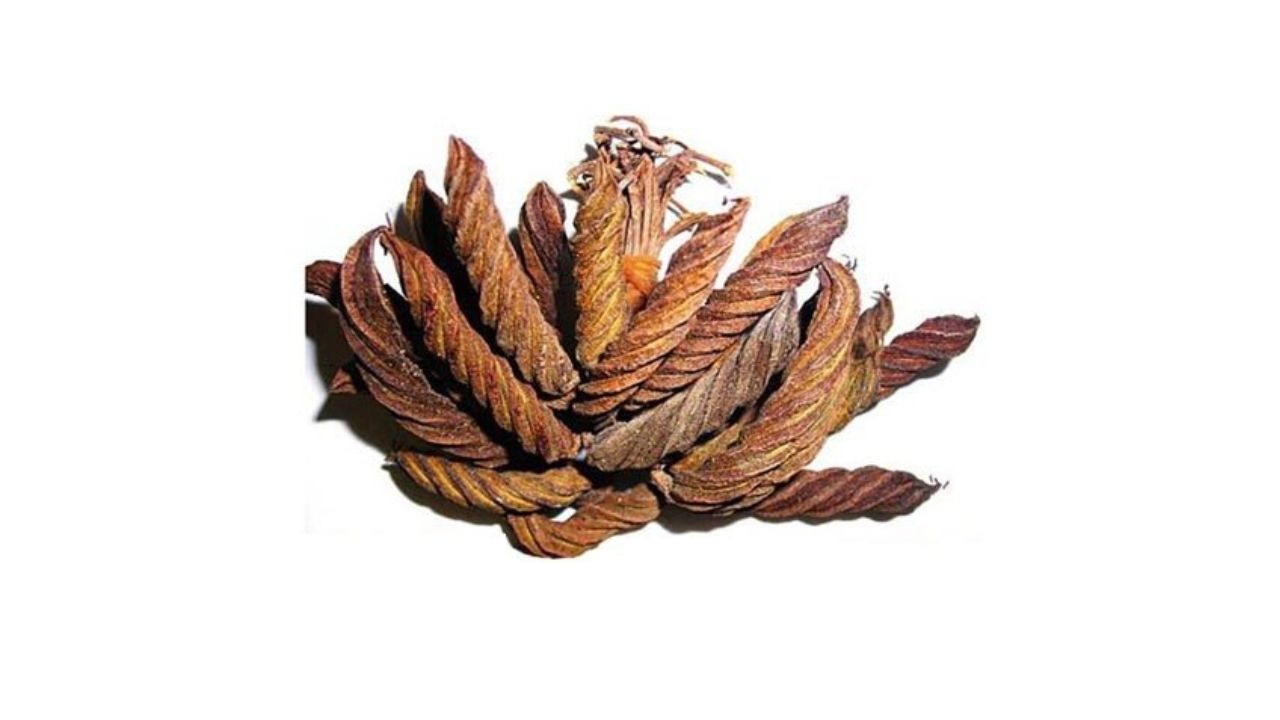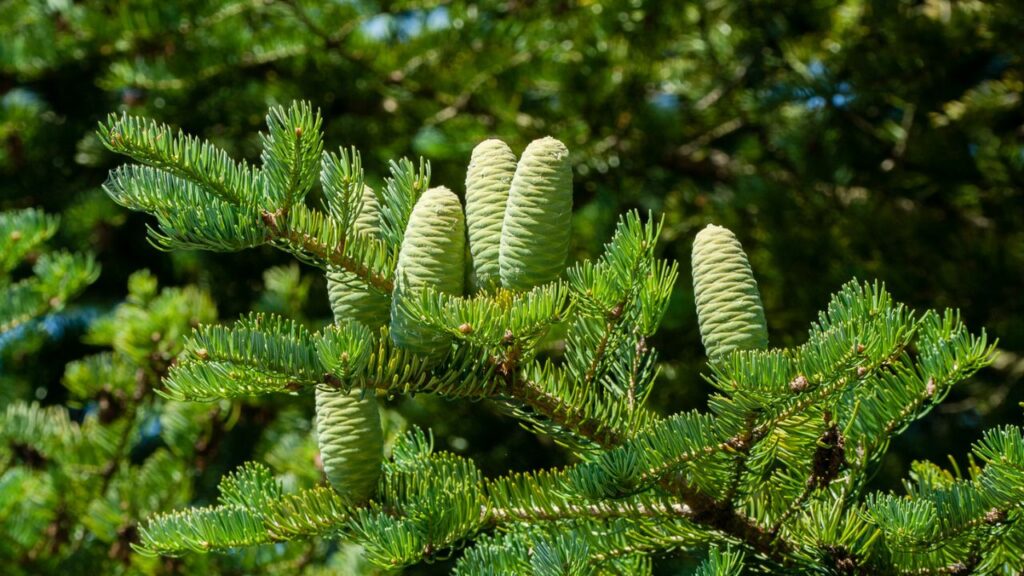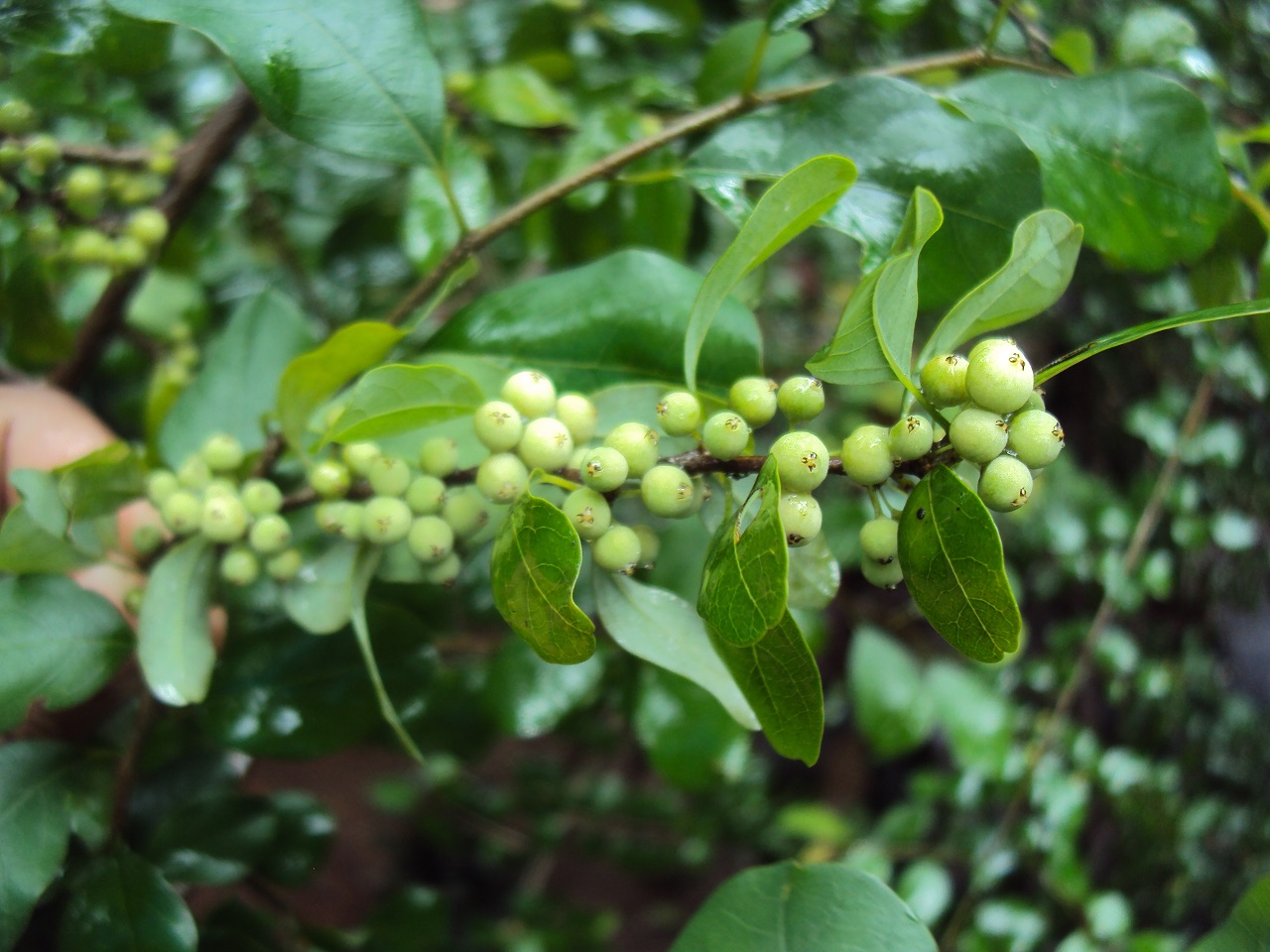
Family : Pinaceae
Biological classification
- Kingdom: Plantae
- Subkingdom: Viridiplantae
- Division: Tracheophyta
- Sub Division: Spermatophytina
- Class: Pinopsida
- Order: Pinales
- Family: Pinaceae
- Genus: Abies
- Species: Abies Webbiana
Introduction To Thalisa patra
Abies spectabilis has a wide distribution, but it has suffered from logging and deforestation, especially at the lower elevations. In 2011, IUCN assessed it as “Near Threatened”. Abies Webbiana is a botanical name given to Talispatra (talish patra) plant. Leaves of this plant have medicinal value. They are frequently used in Ayurveda and folk medicines. Abies webbiana leaves have a unique aroma. Its aroma has potential to cure mild headache and relieve mental stress. Abies Webbiana leaves are helpful in diseases such as cough, asthma, chronic bronchitis, common cold, sneezing, allergic rhinitis and upper respiratory infections.

Habitat / place of origin
Abies spectabilis, the East Himalayan fir, is a conifer species in the family Pinaceae and the genus Abies. It is found in Afghanistan, China (Tibet), northern India, Nepal, and Pakistan.
Synonyms of Thalisa patra
Sanskrit: Patradhyam, Patradhya, Talisa, Talisapatra, Talisha, Dhatriparni, Dhatripatra
Assamese: Talish
Bengali: Talish Pala, Taleesh Patra
English: Himalayan Siver, Indian Silver Fir, The East-Himalayan Fir, The West-Himalayan High Level Fir,
Gujarati: Talish Patra
Hindi: Talish Patra
Kannada: : Tales Patra, Talisapathra, Shukodara
Malyalam: Talisapatra, Taleesapatri
Marathi: Laghu Taleespatra
Oriya: Talis
Tamil: Talispatra, Taleesapatri
Telugu: Taleesapatri
Unani: Zarnab
Morphology of Thalisa patra
Abies spectabilis is an evergreen Tree growing to 30 m at a slow rate.
Stem trunk is more than 1.5 m d.b.h.; scaly,bark rough,branchlets yellowish grey,reddish brown brown, furrowed, pubescent and glabrous, winter buds densely leafy; globose or ovoid, resinous.
Leaves : Leaves are ascending on the upper side of cone which bearing branchlets, pectinate arranged in two lateral sets on young and vegetative branchlets,linear, bright green abaxially, 2-6 cm long, 2-2.5 mm wide, stomatal lines in two white bands abaxially, marginal, apex emarginate or 2-cleft,resin canals 2.
Flower : The flowers are monoecious (individual flowers are either male or female, but both sexes can be found on the same plant) and they are pollinated by Wind.
Fruit Fruits are round or rectangular in shape .grows upto 2-4 inches ,become purple after ripening.
Seed cones cylindric, dark purple, maturing to dark brown or blue-brown with a little purple, with dimensions 8.5-20 cm long, 4.5-7.5 cm wide. Seed scales at middle of cones flabellate – trapeziform , 2.3-2.8 cm long, 2.8-3.4 cm wide, and margin auriculate and thin laterally. Bracts included, spatulate, ⅓ -½ as long as seed scales, acute and short apex . Seeds capsule 1 cm; longer than seeds, apex truncate wing broadly cuneate.
Medicinal Parts
Leaves
Plant variety of Thalisa patra
There are three varieties :
- Taxus baccata – Also identified as Thunekara/ Sthauneyaka .
- Abies webbiana and
- Rhododendron lepidotum.
Chemical Composition of Thalisa patra
- The leaves contain betuloside, abiesin, beta-sitosterol,n-triacontanol, and
- Essential oil present in leaves which contains alpha-pinene, l-limonene, dipentene, delta carene, l-bornyl acetate and l-cardinene. This oil is used in all respiratory ailments whether it is externally or internally.
Ayurvedic Properties of Thalisa patra
Rasa (Taste) : Tikta , Madhur
Guna (Quality) : Laghu , Ruksha
Virya (Potency) : Ushna
Vipak (Post Digestive Effect): Katu
Karma (Pharmacological Actions)
Dosha Karma : Kapha-Vata Shamak
Sansthanik Karma(General Indication ): Vednasathapan
Pachan Sansthan (Digestive System ): Rochak , Deepan , Vatanuloman
Sawasanvah Sansthan (Respiratory System ): Shleshm har , Swashar
Mutravahsansthan (Urinary System ): Mutrajanana
Tapakarma (Thermoregulations ): Jawarghan
Dhatu Agni Vardhak
Qualities/Effects on Tridosha of Thalisa patra
It reduces vata and kapha dosha by ushna viraya
Formulations of Thalisa patra
- Talisadi churna
- Talisadi vati
- Drakshadi churna
- Bhaskar lavan
- Pranada gudika
- Jatiphaladi churna
- Puga khanda
- Talishadi modak
Therapeutic Uses of Thalisa patra
- Chronic obstructive pulmonary diseases
- Common cold
- Chronic bronchitis
- Asthma
- Hemoptysis
- Productive cough
- Chronic productive cough
- Whooping cough (pertussis)
- Upper respiratory tract infections
- Gas or flatulence
- Tumor
- Abdominal distension
- Hypochlorhydria
- Vomiting
- Helminthiasis
- Hiccup
- Amoebiasis
- Mouth disorders
Dosage
Churna =2-5gm
How can you consume Thalisa patra?
It is used as powdered . and used in different formulations.
Benefits of Thalisa patra
Thalis patra can be used in the following ways:
- It is used for getting relief from watery discharge, sneezing and nasal congestion.
- It may cure the common cold infections within 1 to 3 days.
- Talispatra leaves are mucolytic, antitussive and anti-inflammatory.
- It clears the airways and dissolve thick mucus which is accumulated in the lungs.
- Reduce mucus production, help reducing symptoms of chronic bronchitis and asthma.
- It is used to eases in breathing dur it’s bronchodilatory action of the leaves.
- It Helps in reducing the mental stress which is associated with persistent cough and asthma and brings sound sleep at night.
- They help relieving productive cough.
- Pleasant, and distinctive smell.
- Remove excess mucous from the body.
- Prevent or relieve a cough.
- It Helps in relieve the spasm of involuntary muscle.
- Alleviating or preventing rheumatism.
- It inhibits the growth of infectious agents thus capable of prevention from infection.
- Improves appetite.
- Stimulates sexual desire.
- Reducing inflammation by acting on body.
- It Lowers down the body temperature in fever.
- It Prevents the formation and causing the expulsion of flatulence.
- Decongestant: used to relieve nasal congestion.
- It removes toxins and act as blood purifier.
- Used as contraceptive.
Side Effects of Thalisa patra
The following are side effects of Thalis patra:
- Heartburn
- Mouth ulcer
- Vertigo (reeling sensation)
- Worsen the ulcer condition
- Pregnancy & Breastfeeding
- It can cause vomiting, faintness, convulsions
Safety Precautions of Thalisa patra
It is contraindicated in
- Acute phase of ulcerative colitis.
- Mouth ulcer.
- Burning sensation in the abdomen.
- Heartburn
- It can used in pregnancy but in limited amount .
- It should be used carefully in People with pitta prakriti.
- It has antifertility effect.
Substitutes & Adulterants
Substitute : : Swarnatali
References & Further Reading
- https://www.ayurtimes.com/abies-webbiana-talispatra/
- https://www.bimbima.com/herbs/talispatra-abies-webbiana-health-benefits/75/
- https://herbs.indianmedicinalplants.info/index.php/a/1220-abies-webbiana-lindl
- https://www.easyayurveda.com/2014/12/19/abies-webbiana-taleesa-patra-uses-research-side-effects/
- https://wjpr.net/download/article/1559294365.pdf
- API (THE AYURVEDIC PHARMACOPOEIA OF INDIA) PART- I VOLUME – IV
- DRAVYAGUNA VIGYAN =PV SHARMA




